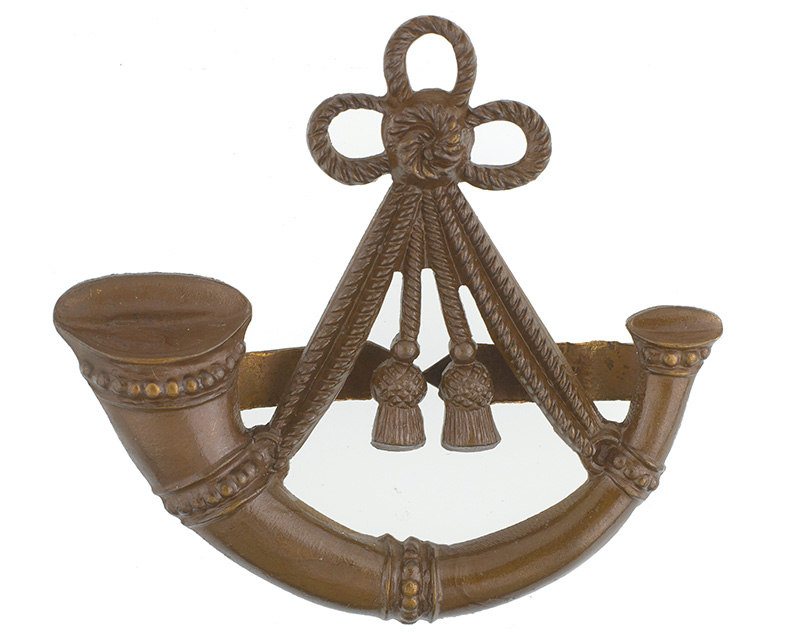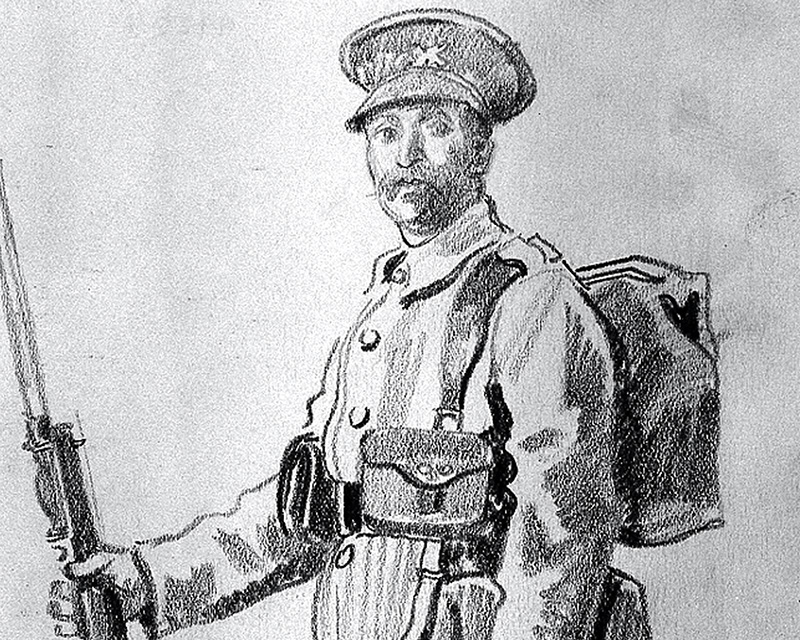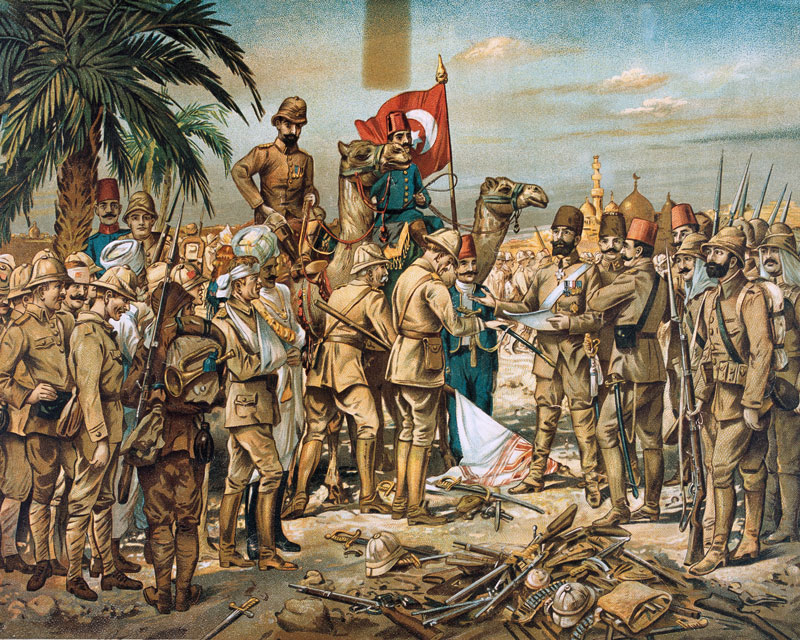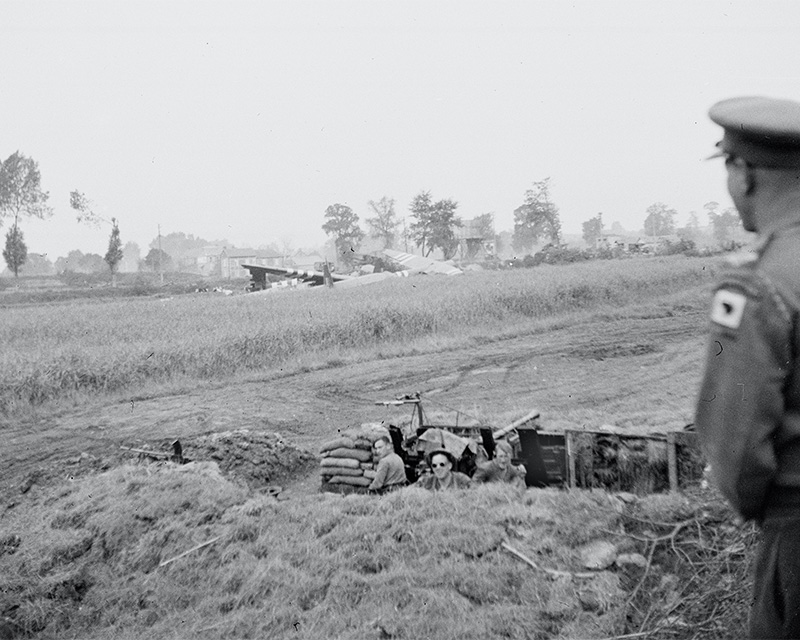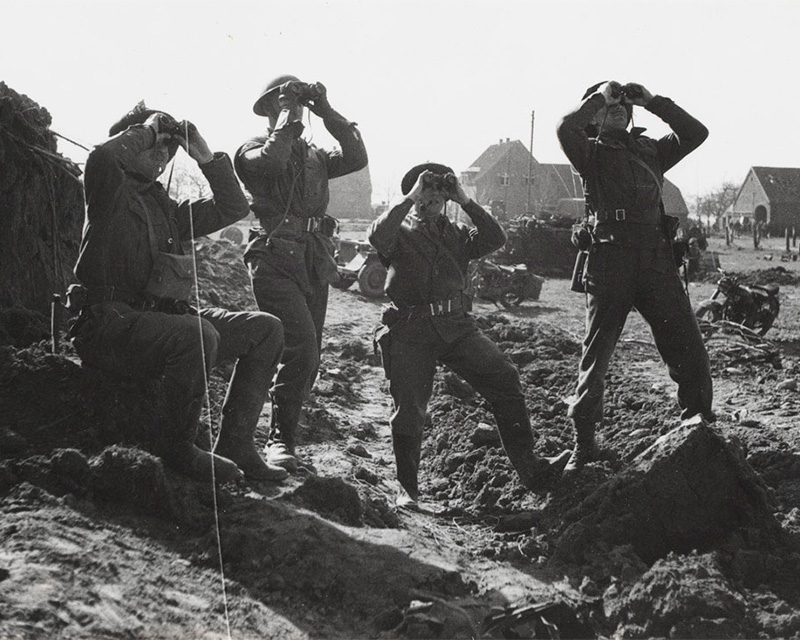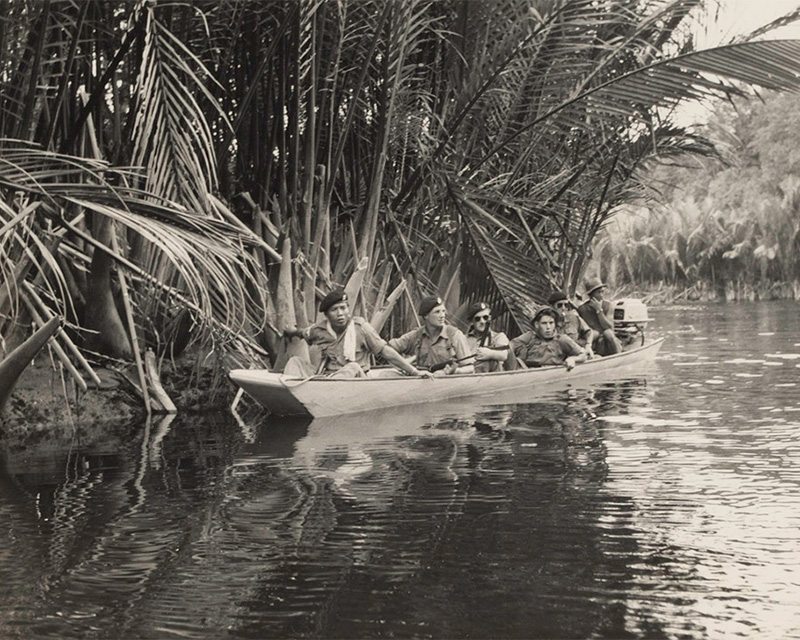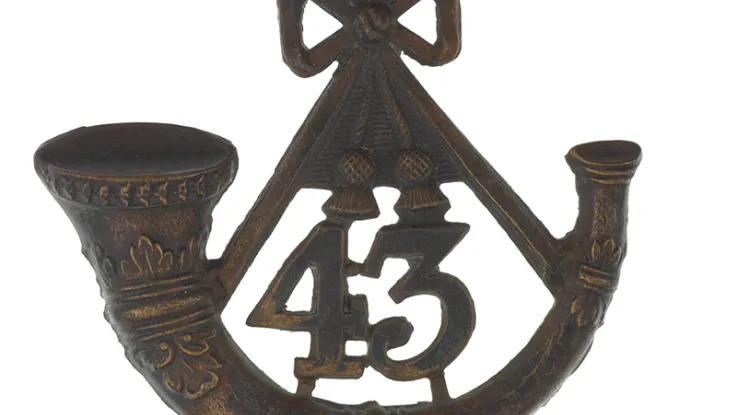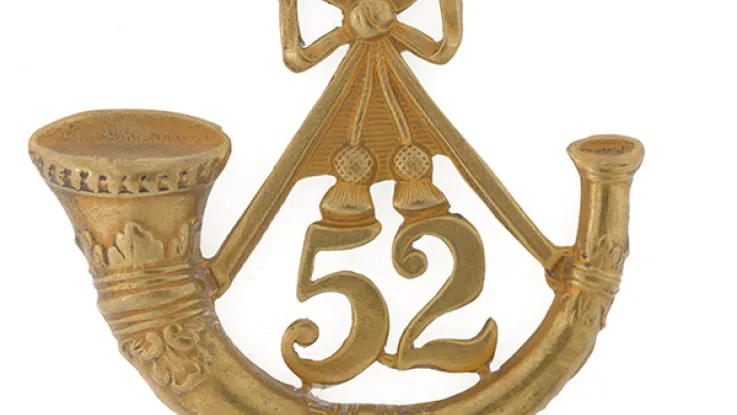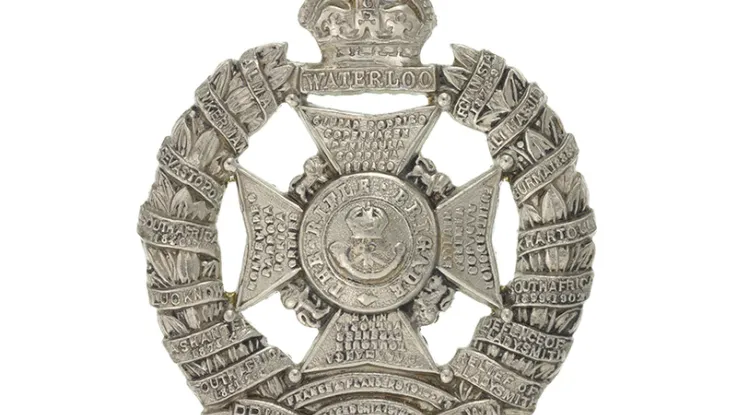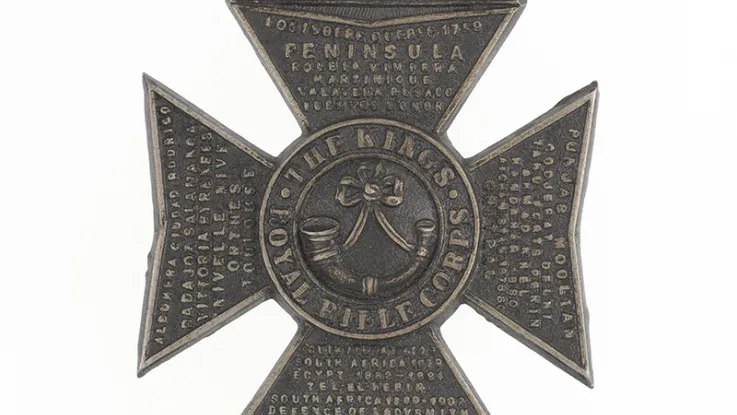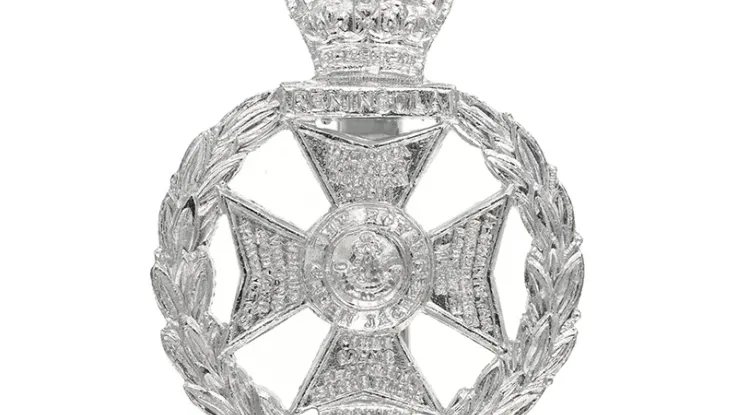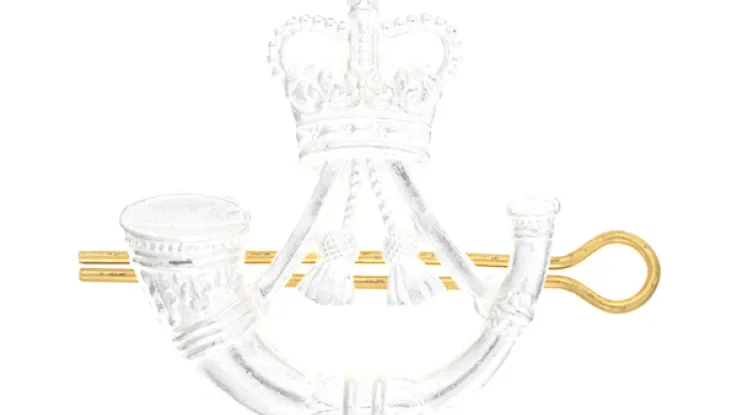Explore more from Regiments and Corps
The Oxfordshire and Buckinghamshire Light Infantry
5 minute read
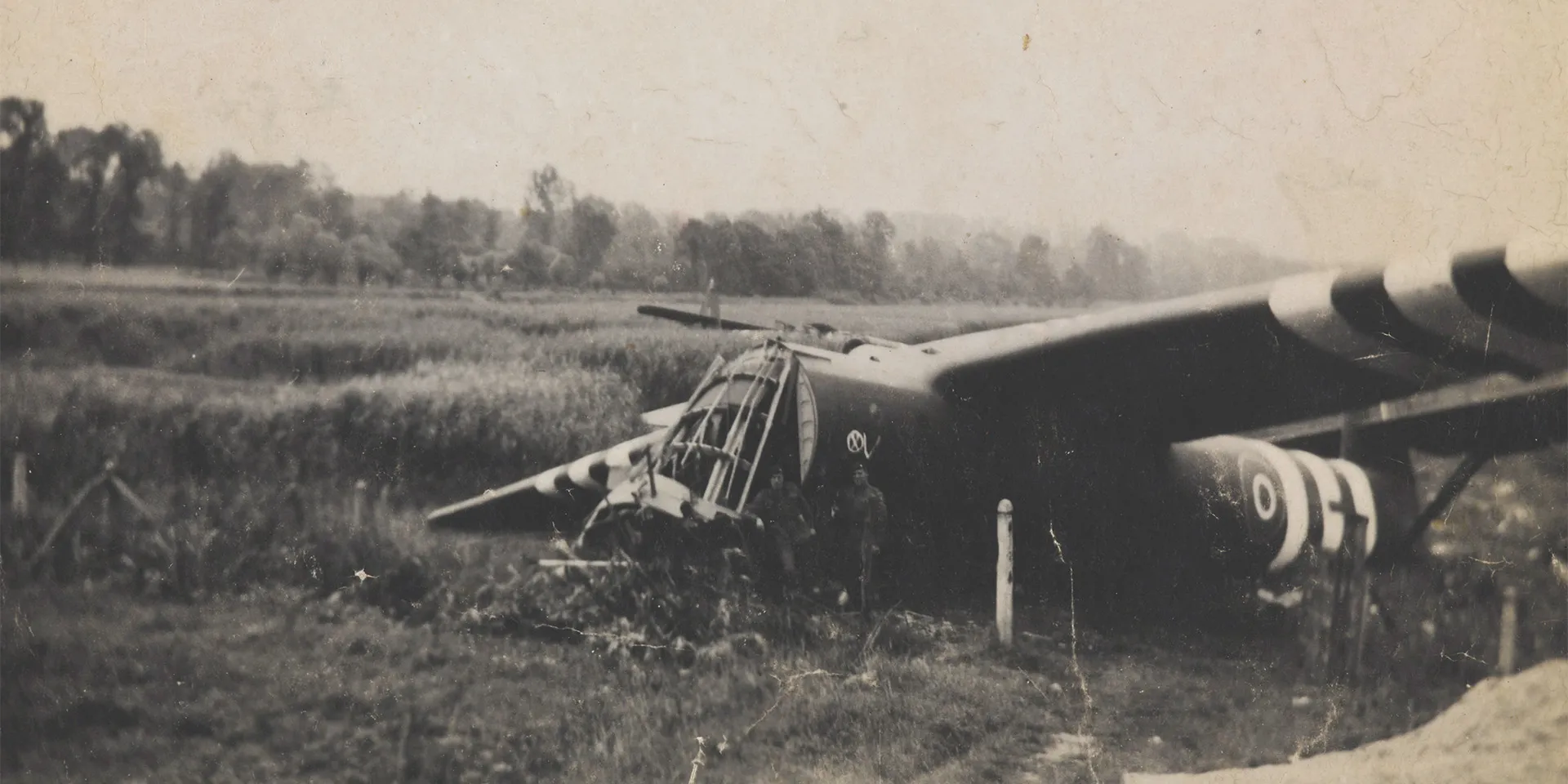
One of the Horsa gliders used in the capture of Pegasus Bridge on D-Day, 1944
Origins
The regiment was formed as The Oxfordshire Light Infantry during the Army reforms of 1881 by merging the 43rd (Monmouthshire Light Infantry) Regiment of Foot and the 52nd (Oxfordshire) Regiment of Foot (Light Infantry). These became the new unit's 1st and 2nd Battalions respectively.
As well as continuing the 52nd Foot's association with Oxfordshire, it was also affiliated with Buckinghamshire, although the latter county was only added to its title in 1908.
Early deployments
1st Battalion was in Burma at the time of the merger and only arrived back in Britain in 1887. Meanwhile, 2nd Battalion moved from England to Ireland in the year of the merger. It was then sent to India in 1884, spending two years in Gibraltar and Egypt en route.
1st Battalion began its own Irish posting in 1893. This lasted until 1899, when it deployed to the Boer War (1899-1902). The latter service included the relief of the besieged British garrison at Kimberley and the Battle of Paardeberg (1900).
2nd Battalion fought in the 1897 Tirah campaign on the North-West Frontier and only returned to Britain in 1903, with 1st Battalion replacing it in India.
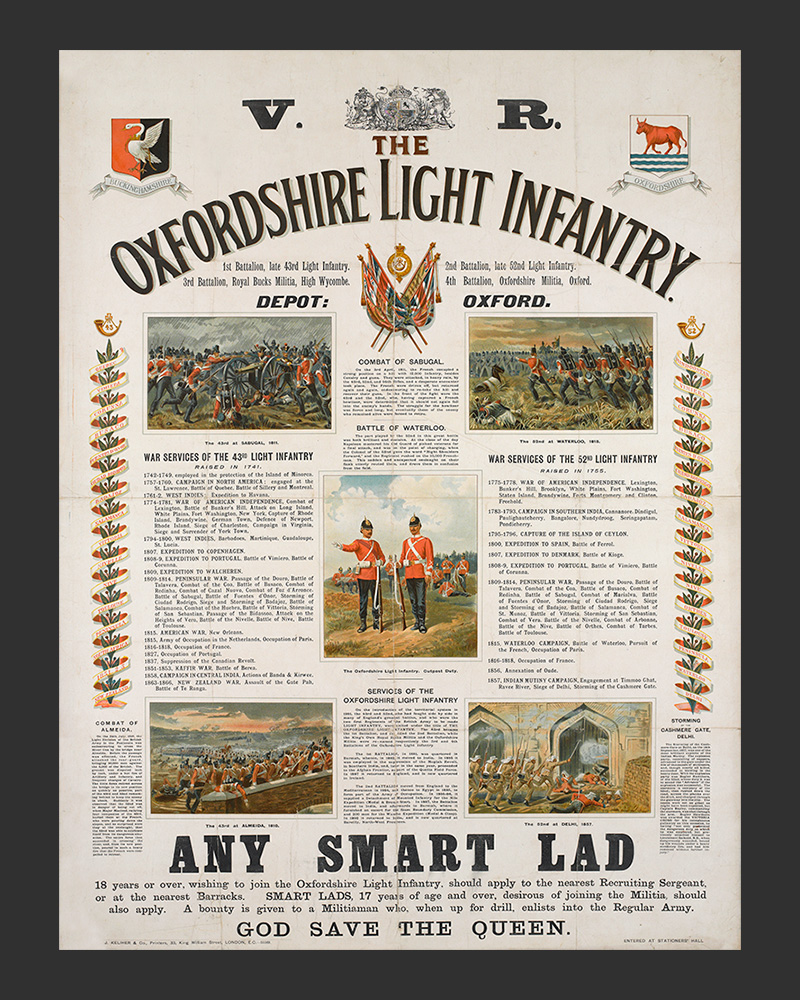
Recruiting poster, ‘The Oxfordshire Light Infantry’, c1890
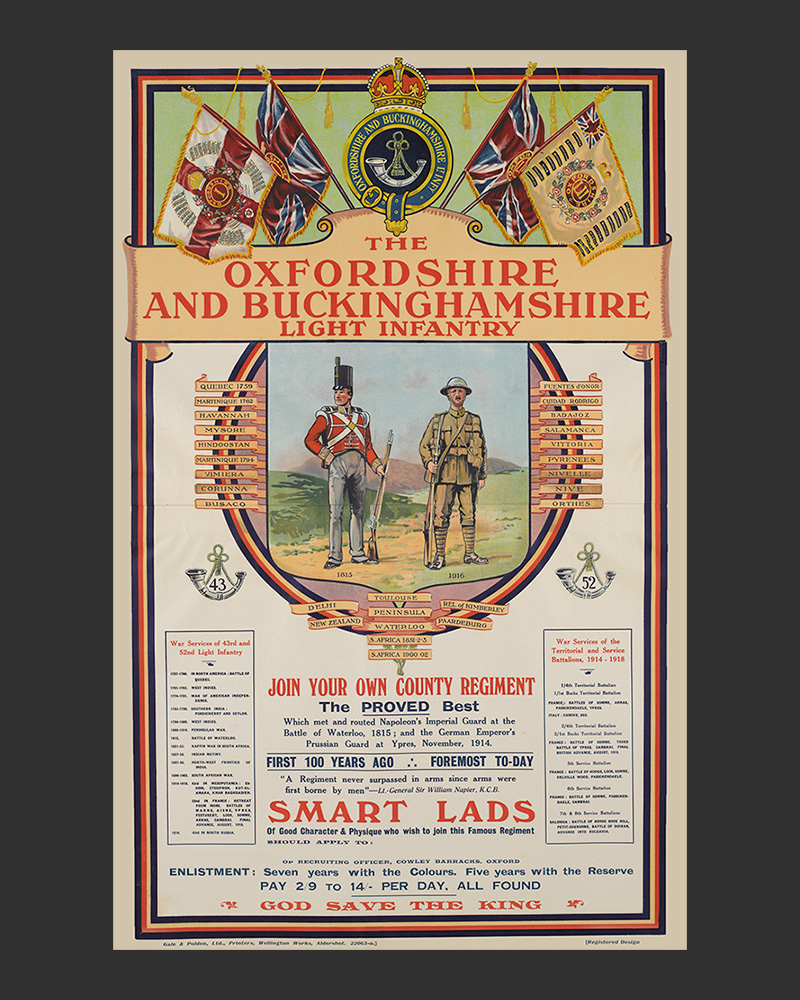
Recruiting poster, ‘The Oxfordshire and Buckinghamshire Light Infantry’, c1920
First World War
2nd Battalion was in Britain on the outbreak of the First World War (1914-18). It deployed straight to the Western Front, where it remained throughout the conflict.
In November 1914, 1st Battalion was sent from India to Mesopotamia, but was captured by the Turks at Kut-al-Amara in April 1916. Reinforcements who had already set sail ended up forming a Provisional Battalion on arrival. This unit was renamed as 1st Battalion in July 1916 and fought on in Mesopotamia for the rest of the war.
The regiment also raised seven Territorial and five New Army battalions during the conflict. These served at home stations, and in Salonika and Egypt, as well as on the Western Front.
Inter-war years
In May 1919, 1st Battalion joined the British force assisting the White Russians against the Bolsheviks during the Russian Civil War. That same year, 2nd Battalion deployed to Ireland during the Irish War of Independence (1919-21). It was joined there by 1st Battalion in 1920.
Both battalions stayed in Ireland until 1922, when 2nd Battalion was sent back to India and 1st Battalion to England. 1st Battalion later joined the British occupation force in Germany (1925-27), but otherwise it remained on home soil.
Second World War
On the outbreak of the Second World War (1939-45), 1st Battalion immediately deployed to France, but had to be evacuated from Dunkirk in June 1940. With a German invasion of Britain thought to be imminent, 2nd Battalion was recalled from India, arriving a month after Dunkirk.
Both regular battalions remained in Britain until the Normandy landings in 1944. Members of 2nd Battalion were the first British troops to land on D-Day (6 June 1944). They were dropped by Horsa glider in the early hours of the morning to secure road bridges across the River Orne and the Caen Canal.
Later that year, 1st Battalion took part in the ground advance during Operation Market Garden, while 2nd Battalion was again dropped by glider during the Rhine Crossings in 1945.
The regiment's Territorial battalions fought in France, Tunisia, Italy and the Far East. Two companies of its Buckinghamshire Battalion joined T-Force, the unit sent to capture German scientists late in the war.
Post-war deployments
At the end of the war, 1st Battalion was placed on occupation duties in Germany, while 2nd Battalion deployed to Palestine. In 1947, 2nd Battalion was recalled to Britain. The two battalions merged the following year.
The regiment's final independent deployments as the Oxfordshire and Buckinghamshire Light Infantry were to Egypt in 1951, Germany again in 1954, and Cyprus in 1956.
Green Jackets Brigade
In 1958, it transferred from the Light Infantry Brigade to the Green Jackets Brigade, joining two rifle regiments, The King's Royal Rifle Corps and The Rifle Brigade (Prince Consort's Own). It was renamed the 1st Green Jackets (43rd and 52nd), officially switching from light infantry to rifles status in 1963.
The regiment continued to serve in Cyprus until 1959, before deploying to Borneo in 1962 and then returning to Germany in 1965.
Legacy
On 1 January 1966, the three regiments of the Green Jackets Brigade were amalgamated to form The Royal Green Jackets.
Regimental museums
The National Army Museum works with a network of Regimental and Corps Museums across the UK to help preserve and share the history and traditions of the Army and its soldiers.
Discover more about The Oxfordshire and Buckinghamshire Light Infantry by visiting the Soldiers of Oxfordshire Museum in Woodstock.

